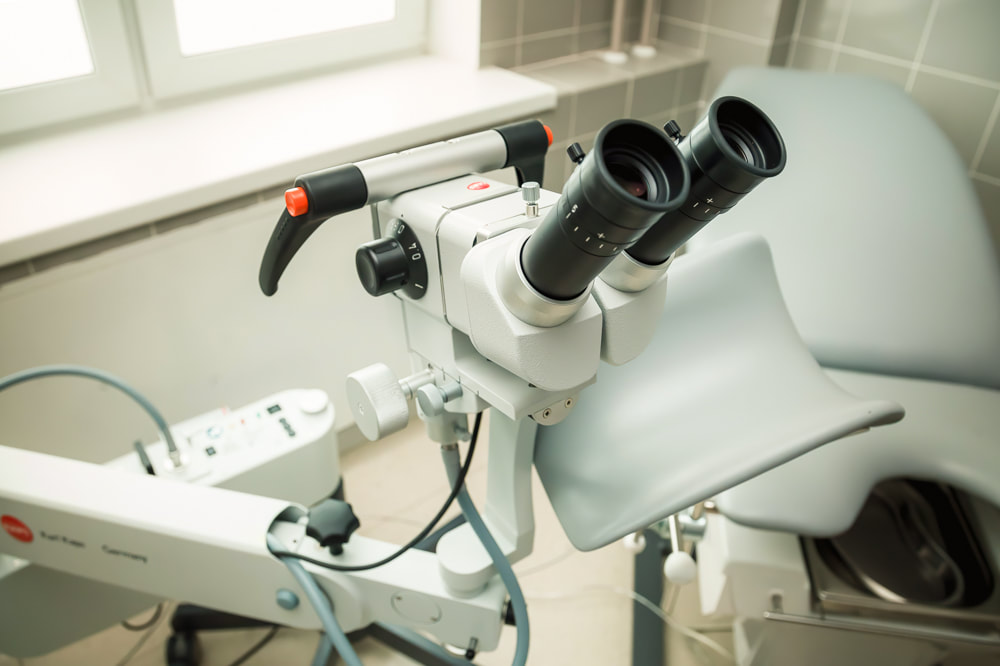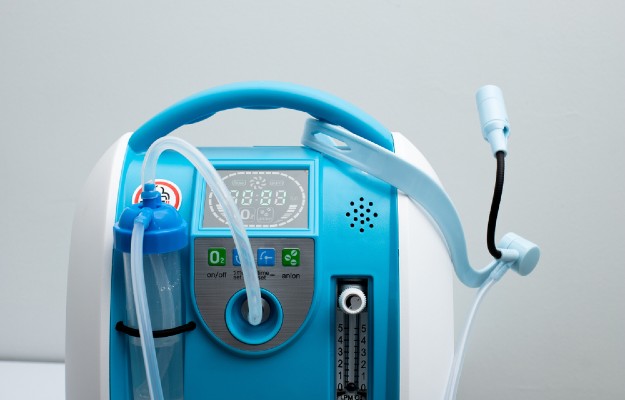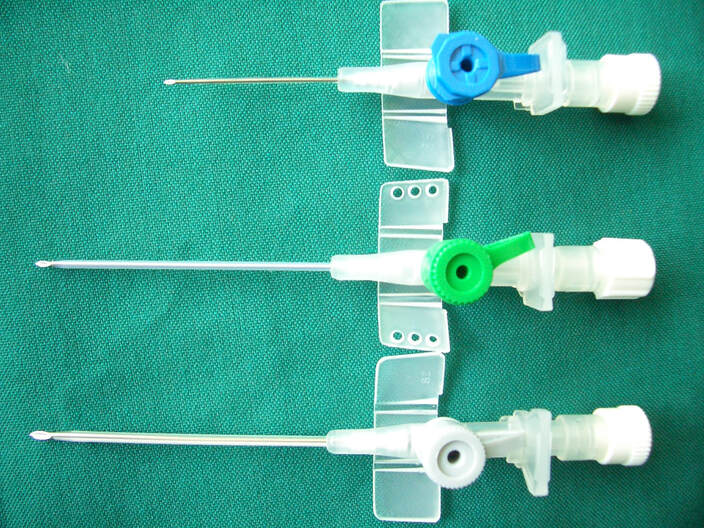|
Seismic surveys are vital exploration techniques used to map subsurface geological structures for various industries, including oil and gas, mineral exploration, and geothermal energy. However, conducting these surveys requires striking a delicate balance between exploration goals and environmental conservation.
Minimizing Environmental Impact: Seismic surveys involve the use of sound waves, which can have potential effects on marine life, particularly marine mammals and fish. To mitigate these impacts, industry stakeholders implement strict protocols to minimize noise levels, use specialized equipment, and adhere to regional regulations. Marine Mammal Monitoring: One of the key environmental considerations in seismic surveys is the monitoring of marine mammals in the survey area. By deploying passive acoustic monitoring devices, survey operators can detect the presence of marine mammals and adjust survey operations accordingly. Over the projected period (2022-2026), Seismic Survey Market expansion is anticipated to be fueled by technological advancements. Seasonal Restrictions: Many regions impose seasonal restrictions on seismic surveys to protect sensitive marine ecosystems during critical periods such as migration or breeding seasons. These restrictions help ensure minimal disturbance to marine life. Collaborative Efforts: To strike the right balance between exploration and conservation, industry players collaborate with environmental organizations, governments, and research institutions to develop best practices and advance environmental protection measures. Environmental considerations in Seismic Survey play a crucial role in balancing exploration objectives with conservation efforts. By implementing strict protocols, conducting marine mammal monitoring, adhering to seasonal restrictions, and collaborating with stakeholders, the seismic survey industry strives to minimize its environmental impact and protect marine ecosystems.
0 Comments
Exploring the Role of Electronic Health Record (EHR) Systems in Improving Medical Practice7/26/2023 Electronic Health Record (EHR) systems have revolutionized the healthcare industry by transforming the way medical information is stored, accessed, and shared. These digital platforms allow healthcare providers to maintain comprehensive and real-time patient records, leading to improved medical practice and patient care.
One of the significant advantages of EHR systems is the centralized access to patient data. Healthcare professionals can quickly retrieve patient history, medication records, lab results, and treatment plans, enabling better-informed decision-making. This enhanced accessibility promotes coordinated care and reduces the risk of medical errors, resulting in improved patient outcomes. Moreover, EHR systems streamline administrative tasks, reducing paperwork and manual documentation. This efficiency allows healthcare providers to spend more time with patients, strengthening doctor-patient relationships and enhancing patient satisfaction. Additionally, EHR systems facilitate seamless communication and information exchange among healthcare providers, specialists, and laboratories. This interoperability promotes care coordination, especially in complex cases where multiple specialists are involved in a patient's treatment. Due to the expanding use of electronic health records, or EHR, and the acceptance of healthcare IT solutions, the global Electronic Health Record (EHR) Systems Market is expanding rapidly. Furthermore, EHR systems support evidence-based medicine and research by enabling the collection and analysis of large-scale healthcare data. Healthcare organizations can use anonymized data to identify trends, patterns, and treatment outcomes, ultimately contributing to medical advancements and healthcare improvements. EHR systems play a pivotal role in improving medical practice by providing comprehensive patient data, streamlining administrative tasks, facilitating care coordination, and promoting evidence-based medicine. As technology continues to advance, the integration of artificial intelligence and predictive analytics in Electronic Health Record (EHR) Systems holds the potential to further enhance medical decision-making and patient care in the future. Airsoft guns are popular recreational and competitive replica firearms that shoot plastic pellets. While they are designed for safe use and enjoyment, it is crucial to understand the importance of responsible usage and regulation to ensure the safety of users and those around them.
Responsible Usage: Responsible usage of airsoft guns involves adhering to the following guidelines:
Importance of Regulation: Regulation is essential to ensure the safe and responsible use of airsoft guns. Governments and regulatory bodies play a vital role in setting guidelines and safety standards for manufacturers, distributors, and users. Regulation helps prevent misuse and accidents and promotes a positive image of the airsoft community. In terms of revenue, the handgun category is anticipated to grow significantly in the worldwide Airsoft Guns Market over the anticipated period. Safety Education: Safety education is crucial for new airsoft gun owners and enthusiasts. Airsoft organizations and clubs often provide safety courses to educate users about proper handling, maintenance, and shooting techniques. These courses also emphasize the importance of respecting the rules and regulations governing airsoft gun usage. Airsoft guns can be a fun and exciting hobby when used responsibly and in compliance with regulations. Adhering to safety guidelines, understanding local laws, and obtaining proper safety education are essential for the enjoyment of airsoft guns while ensuring the safety of all participants. Cervical abnormalities and the risk of cervical cancer pose significant health concerns for women worldwide. However, with advancements in medical technology, there are now more effective methods of early detection and prevention. One such method that has revolutionized the field is Colposcope. This diagnostic procedure offers numerous benefits in identifying and managing cervical abnormalities, providing women with a higher chance of successful treatment and improved health outcomes.
Colposcopic is a visual examination of the cervix using a colposcopic, a magnifying instrument that provides an enhanced view of the cervical tissue. It is typically recommended when an abnormal Pap smear or HPV test result is obtained, indicating the presence of potentially pre-cancerous or cancerous cells. By allowing clinicians to closely examine the cervix, colposcopic enables them to identify abnormal areas that may not be visible to the naked eye, leading to more accurate diagnoses and tailored treatment plans. One of the primary advantages of colposcopic is its ability to detect and differentiate between high-grade and low-grade lesions. This differentiation is crucial in determining the appropriate course of action. High-grade lesions are more likely to progress to cervical cancer if left untreated, while low-grade lesions may resolve on their own. Through Colposcope, healthcare providers can obtain targeted biopsies of suspicious areas, allowing for precise diagnosis and treatment decisions. By identifying high-grade lesions early on, women can receive timely interventions, preventing the development of cervical cancer. Moreover, colposcopic provides an opportunity for directed therapy during the same procedure. If abnormal areas are identified, various treatment modalities can be employed, such as cryotherapy or loop electrosurgical excision procedure (LEEP). These techniques involve removing or destroying the abnormal tissue, reducing the risk of progression to cancer. This immediate intervention not only offers convenience to patients but also reduces the need for multiple appointments and potential delays in treatment. Colposcope also plays a crucial role in follow-up care after treatment for cervical abnormalities. It allows healthcare providers to monitor the healing process and assess the success of the intervention. Regular colposcopic examinations post-treatment enable the detection of recurrent abnormalities or new lesions, facilitating prompt intervention and minimizing the risk of cancer recurrence. This comprehensive approach ensures that women receive ongoing surveillance and appropriate care, enhancing their long-term well-being. Additionally, colposcopic can provide reassurance to patients with normal or low-grade findings, alleviating anxiety and offering peace of mind. It allows healthcare providers to confirm the absence of significant abnormalities or provide further guidance on managing low-grade lesions. The detailed visual examination and expert interpretation offered by colposcopic instill confidence in the accuracy of the results, enhancing patient satisfaction and trust in their healthcare provider. It is important to note that Colposcope is a safe procedure with minimal risks and complications. While some women may experience mild discomfort during the examination, complications are rare. The benefits of early detection and targeted treatment far outweigh the potential discomfort associated with the procedure. Healthcare providers are skilled in ensuring patient comfort and explaining the process, further reducing any apprehension. Colposcopic is a vital tool in the early detection and management of cervical abnormalities. By providing an enhanced visualization of the cervix and targeted biopsies, it enables precise diagnoses and treatment decisions. The ability to perform directed therapy during the same procedure and monitor post-treatment care ensures comprehensive and timely interventions. Moreover, colposcopic offers reassurance to patients with normal or low-grade findings while minimizing the risk of missing high-grade lesions. With its numerous benefits, Colposcope plays a pivotal role in safeguarding women's health by detecting cervical abnormalities and preventing the progression to cervical cancer. Oxygen therapy plays a vital role in the treatment of various respiratory conditions and has proven to be a life-saving intervention for patients suffering from chronic obstructive pulmonary disease (COPD), asthma, pneumonia, and other respiratory ailments.
Traditionally, oxygen therapy involved the use of standard oxygen tanks or cylinders, but with advancements in medical technology, personalized treatment options are now available through the use of Medical Oxygen Concentrators. These innovative devices have revolutionized the way oxygen therapy is delivered, providing a range of benefits for patients and healthcare providers alike. Oxygen generators are compact and portable devices designed to extract oxygen from the surrounding air and deliver it to the patient at a consistent flow rate. Unlike traditional oxygen cylinders that require regular refilling, concentrators generate oxygen on-demand, eliminating the need for cumbersome deliveries and reducing costs in the long run. This convenience allows patients to lead more active and independent lives, without the constraints imposed by traditional oxygen therapy. One of the key advantages of Medical Oxygen Concentrators is their ability to provide customized treatment. Each patient's oxygen therapy needs may vary based on their condition, activity level, and overall health. With concentrators, healthcare providers can easily adjust the flow rate and oxygen concentration to suit individual requirements. This personalized approach ensures that patients receive the precise amount of oxygen they need, promoting optimal therapeutic outcomes and enhancing their quality of life. Furthermore, oxygen generators offer versatility in terms of delivery methods. They can deliver oxygen through various interfaces, including nasal cannulas, masks, and even specialized devices for pediatric patients. This flexibility allows healthcare providers to tailor the treatment to the patient's comfort and convenience, ensuring compliance and adherence to therapy. By offering a range of delivery options, concentrators make oxygen therapy more accessible and manageable for patients of all ages. Another significant benefit of Medical Oxygen Concentrators is their energy efficiency and eco-friendliness. Unlike traditional oxygen cylinders that require continuous refilling, concentrators draw in ambient air, extract oxygen, and deliver it directly to the patient. This process significantly reduces energy consumption and minimizes the carbon footprint associated with oxygen therapy. By opting for concentrators, healthcare facilities can contribute to environmental sustainability while providing high-quality care to their patients. In addition to their environmental advantages, concentrators also enhance patient safety. Unlike oxygen cylinders that can pose risks of leakage, combustion, or explosions, oxygen generators operate on electricity and do not involve pressurized oxygen. This eliminates the hazards associated with handling and storing traditional oxygen tanks, making concentrators a safer alternative for both patients and healthcare providers. Furthermore, concentrators are equipped with advanced safety features such as oxygen purity monitors, alarms for low oxygen levels, and power failure backups. These built-in safeguards ensure that patients receive the correct concentration of oxygen at all times, even in the event of power outages or equipment malfunctions. As a result, Medical Oxygen Concentrators provide peace of mind for patients and their caregivers, alleviating concerns about potential risks and emergencies. As the demand for oxygen therapy continues to rise, personalized treatment options become increasingly important. Oxygen generators offer an innovative solution that addresses the unique needs of patients while streamlining healthcare delivery. Their portability, customizability, energy efficiency, and safety features make them a valuable asset in the management of respiratory conditions. Customized oxygen therapy using Medical Oxygen Concentrators has transformed the landscape of respiratory care. These devices offer a multitude of benefits, including personalized treatment, versatile delivery options, energy efficiency, and enhanced patient safety. As healthcare providers and patients embrace this advanced technology, it is evident that oxygen generators are instrumental in optimizing respiratory therapy outcomes and improving the overall well-being of patients. Baking is an intricate science, and achieving the perfect texture and moisture in your baked goods can sometimes feel like an elusive goal. However, there is a secret ingredient that can greatly enhance your baking endeavours: Soy Lecithin. This versatile emulsifier derived from soybeans can work wonders in creating baked goods that are moist, tender, and have a delightful texture. In this article, we will explore the art of baking with emulsifier and uncover the secrets to achieving the perfect results.
First and foremost, let's understand what emulsifier is and how it works. emulsifier is a naturally occurring substance found in soybeans that acts as an emulsifier. It helps to bind water and fats together, creating a smoother and more homogeneous mixture. When incorporated into your baking recipes, emulsifier disperses fat molecules more evenly, resulting in improved texture, crumb structure, and overall moisture retention. One of the key benefits of using Soy Lecithin in baking is its ability to prolong the freshness of your baked goods. Due to its emulsifying properties, it helps to prevent staling by reducing moisture loss. This means that your cakes, cookies, and breads will stay moist and delicious for longer periods, allowing you to savor the flavors and textures for days after baking. When it comes to specific applications, emulsifier can be used in a variety of baked goods. For cakes and cupcakes, adding emulsifier to the batter can create a lighter and more tender crumb, making your cakes irresistibly fluffy. Similarly, incorporating emulsifier into cookie dough can result in cookies that are soft and chewy on the inside while maintaining a delicate crispness on the outside. Additionally, using emulsifier in bread recipes can improve the dough's elasticity, leading to a well-risen loaf with a moist and springy crumb. To incorporate emulsifier into your baking, you have a few options. One common method is to use powdered emulsifier, which can be easily measured and added to your dry ingredients. Another option is to use liquid Soy Lecithin, which can be mixed with your wet ingredients for even distribution. Regardless of the form you choose, it's important to follow the recommended dosage provided by the manufacturer or your recipe, as too much emulsifier can negatively impact the texture and flavor of your baked goods. While emulsifier can be a game-changer in your baking endeavors, it's worth noting that it may not be suitable for everyone. If you have a soy allergy or are following a soy-free diet, it's important to avoid using emulsifier and explore alternative emulsifiers or techniques to achieve similar results. Always read labels and consult with a healthcare professional if you have any concerns or dietary restrictions. Mastering the art of baking requires an understanding of the ingredients and techniques that can elevate your creations to new heights. Emulsifier, with its emulsifying properties, offers a secret weapon in achieving perfect texture and moisture in your baked goods. Whether you're baking a cake, cookies, or bread, incorporating Soy Lecithin can help you create treats that are moist, tender, and simply irresistible. So, next time you're in the kitchen, consider adding a touch of emulsifier to your recipes and unlock the secrets to baking perfection. Preimplantation Genetic Diagnosis: A Breakthrough in Genetic Testing for Assisted Reproduction7/11/2023 Advancements in medical science and technology have revolutionized the field of assisted reproduction, enabling couples to overcome genetic disorders and increase the chances of having healthy offspring. One such breakthrough in genetic testing is Preimplantation Genetic Diagnosis (PGD), a technique that offers hope to couples facing the risk of passing on inherited conditions to their children.
PGD allows for the identification of genetic abnormalities in embryos before they are implanted in the mother's womb, providing valuable information for informed decision-making and increasing the success rates of assisted reproductive techniques. PGD involves the careful examination of embryos created through in vitro fertilization (IVF) to identify genetic abnormalities or chromosomal disorders. It is primarily used when one or both parents carry a known genetic mutation or have a high risk of transmitting a specific genetic condition to their children. By analyzing the genetic material of embryos, PGD allows couples to select and transfer only those embryos that are free from the identified genetic defects, thus reducing the likelihood of passing on inherited conditions. The process of Preimplantation Genetic Diagnosis begins with the stimulation of the woman's ovaries to produce multiple eggs, which are then collected and fertilized with the partner's sperm in a laboratory. After fertilization, the embryos develop for a few days until they reach a suitable stage for biopsy. During the biopsy, a small number of cells are extracted from each embryo for genetic analysis. The cells are then screened for specific genetic mutations or chromosomal abnormalities, depending on the couple's genetic history or concerns. The embryos that are found to be unaffected are selected for transfer to the mother's uterus, increasing the chances of a successful pregnancy with a healthy baby. One of the key advantages of PGD is the ability to prevent the transmission of severe genetic disorders to future generations. Conditions such as cystic fibrosis, Huntington's disease, sickle cell anemia, and many others can be identified through Preimplantation Genetic Diagnosis, allowing couples to make informed choices about their reproductive options. PGD also provides an opportunity for couples who have experienced repeated miscarriages or failed IVF cycles to identify any underlying genetic factors that may be contributing to their difficulties and make adjustments accordingly. Moreover, PGD can help minimize the emotional and financial burdens associated with the termination of pregnancies affected by genetic disorders. By screening embryos prior to implantation, couples can avoid the heart-wrenching decision of terminating a pregnancy after a positive prenatal diagnosis. This not only reduces the emotional distress but also the financial strain associated with the termination procedure, allowing couples to focus on building a healthy family. It is essential to note that PGD is not without its ethical considerations. The technique raises questions about the selection and discarding of embryos based on genetic characteristics, which may lead to concerns regarding eugenics or the creation of "designer babies." To address these concerns, strict guidelines and regulations are in place to ensure responsible and ethical use of PGD. These guidelines typically prohibit the use of PGD for non-medical reasons and promote the principle of reproductive autonomy while discouraging practices that may lead to discrimination or the misuse of genetic information. Preimplantation Genetic Diagnosis is a groundbreaking technique that has revolutionized genetic testing for assisted reproduction. By allowing the identification of genetic abnormalities in embryos before implantation, PGD offers hope to couples at risk of passing on inherited conditions to their children. It empowers couples with knowledge and choices, minimizing the emotional and financial burdens associated with genetic disorders and increasing the chances of a successful pregnancy with a healthy baby. While ethical considerations are important, responsible use of PGD under established guidelines ensures that this breakthrough technology continues to provide immense benefits to couples worldwide. Medical instrumentation has come a long way in recent decades, revolutionizing the field of healthcare and enabling innovative procedures and treatments. One area that has seen significant advancements is tube technology.
Cannula, slender hollow tubes used for various medical purposes, have evolved to enhance patient care, improve procedural outcomes, and optimize surgical techniques. From their humble beginnings to the cutting-edge designs of today, let's explore the evolution of tube technology and the impact it has had on the medical field. The term "tube" originates from the Latin word "canna," meaning "reed" or "tube." Historically, tube were primarily used for drainage and irrigation purposes. Early tubes were simple, straight tubes made from materials like metal or glass. These basic designs had limited functionality and were prone to causing tissue damage and complications during insertion and removal. Advancements in medical research and technology led to significant improvements in Cannula design and functionality. Modern tubes are constructed from flexible, biocompatible materials like silicone or polyurethane, which minimize tissue trauma and allow for easy insertion and manipulation. These materials are also compatible with various medical applications, including blood transfusion, drug delivery, and tissue sampling. The size and shape of tubes have also evolved over time. Smaller gauge tubes, with diameters as thin as a human hair, have become commonplace. These ultrafine tubes enable less invasive procedures, reducing patient discomfort, scarring, and recovery time. Additionally, curved and tapered tubes have been developed to facilitate precise maneuverability during delicate procedures, such as plastic surgery or ophthalmic interventions. Another significant advancement in tube technology is the incorporation of specialized features to enhance functionality. For example, some Cannula now come equipped with valves or stopcocks that allow for controlled fluid flow or prevent backflow, improving the accuracy and safety of procedures. In certain applications, such as liposuction, tubes may feature suction capabilities to remove unwanted fat deposits effectively. Moreover, the integration of imaging and visualization technologies has revolutionized tube-assisted procedures. The introduction of fiber optics and miniaturized cameras allows surgeons to monitor the progress of a procedure in real-time, providing valuable insights and enhancing precision. This visual feedback helps reduce the risk of complications and ensures accurate placement of the tube in delicate anatomical structures. Advancements in Cannula technology have also given rise to innovative minimally invasive surgical techniques. Procedures like laparoscopy and endoscopy rely heavily on tubes to access internal organs and perform interventions with minimal incisions. These techniques offer numerous benefits over traditional open surgeries, including reduced pain, shorter hospital stays, faster recovery, and improved cosmetic outcomes. In recent years, nanotechnology has begun to make its mark on tube development. Nanocannulas, featuring microscopic dimensions, have shown promise in targeted drug delivery and cellular-level interventions. These ultra-small devices enable precise administration of medication or extraction of cellular samples, opening up new avenues in personalized medicine and regenerative therapies. The evolution of tube technology has had a profound impact on various medical specialties. In cardiology, specialized tubes are used for angioplasty, stent placement, and cardiac catheterization, aiding in the diagnosis and treatment of cardiovascular diseases. In neurosurgery, Cannula assist in intracranial procedures, such as tumor removal or shunt placements. In dermatology, tubes are employed for dermal fillers, reducing the risk of complications and improving patient comfort. Looking ahead, the future of tube technology holds even more promise. Researchers are exploring the integration of sensors and actuators into tubes, allowing for real-time monitoring of physiological parameters and the implementation of robotic-assisted procedures. Furthermore, advancements in 3D printing technology may enable the fabrication of patient-specific tubes, tailored to individual anatomical requirements, further optimizing treatment outcomes. The evolution of tube technology has transformed medical instrumentation, improving patient care and revolutionizing surgical techniques. From basic drainage tubes to sophisticated, minimally invasive devices, Cannulas have come a long way. With ongoing advancements, these slender tubes will continue to play a vital role in the future of healthcare, enabling safer, more precise, and personalized medical interventions. Global warming and climate change have become pressing challenges that require immediate attention and concerted efforts from governments, businesses, and individuals worldwide. Mitigating the impacts of climate change requires substantial financial resources to support the development and implementation of sustainable solutions. In this context, Climate and Carbon Finance play a crucial role in mobilizing resources to combat global warming.
Climate finance refers to the flow of funds from developed to developing countries to support their efforts in addressing climate change. It aims to assist these countries in adapting to the impacts of climate change and transitioning to low-carbon, climate-resilient economies. Climate finance can come from various sources, including public funds, private investments, and international financial institutions. One of the key mechanisms for Climate and Carbon Finance is the Green Climate Fund (GCF). Established under the United Nations Framework Convention on Climate Change (UNFCCC), the GCF aims to promote a paradigm shift towards low-emission and climate-resilient development pathways. It provides financial support to developing countries for projects and programs that reduce greenhouse gas emissions and enhance their adaptive capacity. Private sector engagement is vital in mobilizing climate finance. Many businesses recognize the risks and opportunities associated with climate change and are taking action to address them. They invest in renewable energy projects, energy-efficient technologies, and sustainable practices to reduce their carbon footprint. Moreover, innovative financial instruments such as green bonds and sustainability-linked loans have emerged, enabling companies to raise capital specifically for climate-related projects. Climate and Carbon Finance, on the other hand, focuses on reducing greenhouse gas emissions through market-based mechanisms. The most well-known mechanism is carbon pricing, which puts a price on carbon emissions to incentivize the reduction of greenhouse gases. Carbon pricing can be implemented through carbon taxes or emissions trading systems (ETS), where companies trade emissions allowances. The revenue generated from carbon pricing mechanisms can be used to finance climate-related initiatives. For instance, the funds can be invested in renewable energy projects, energy efficiency measures, and forest conservation efforts. By creating a financial value for carbon emissions, carbon finance encourages companies to adopt cleaner technologies and reduce their carbon footprint. Another innovative approach to carbon finance is carbon offsetting. Companies or individuals can offset their emissions by investing in projects that reduce greenhouse gas emissions elsewhere. These projects, such as reforestation or clean cookstove initiatives, generate carbon credits that can be sold in Climate and Carbon Finance. The revenue from carbon credit sales can be used to finance additional emission reduction projects, creating a positive cycle of climate action. To ensure transparency and accountability in carbon finance, robust monitoring, reporting, and verification (MRV) mechanisms are essential. MRV frameworks enable the tracking of climate finance flows, the measurement of emission reductions, and the assessment of project outcomes. They provide credibility to financial instruments and ensure that resources are effectively deployed to combat global warming. Climate and Carbon Finance are critical in mobilizing resources to combat global warming. Climate finance helps developing countries adapt to climate change and transition to low-carbon economies, while carbon finance incentivizes emissions reductions through market-based mechanisms. Both public and private sector participation is necessary to address the financial needs of climate action. By leveraging innovative financing instruments, engaging the private sector, and implementing effective monitoring mechanisms, we can mobilize the resources needed to combat global warming and build a sustainable future for generations to come. Containerized transport has revolutionized the shipping industry, providing a cost-effective and efficient method for transporting goods across the globe. However, beyond its economic advantages, containerized transport also offers significant environmental benefits. In this article, we will explore how sustainable Shipping Containers contribute to a greener and more environmentally friendly transportation system.
Reduced Energy Consumption: One of the key environmental advantages of containerized transport is the reduced energy consumption it offers compared to traditional shipping methods. By utilizing standard-sized containers, cargo can be loaded and unloaded more efficiently, optimizing vessel space. This reduces the number of trips required and minimizes fuel consumption, resulting in lower greenhouse gas emissions. Efficient Use of Resources: Containerization enables efficient use of resources, both in terms of shipping vessels and transportation infrastructure. The standardized containers are designed to maximize space utilization, allowing for stacking and easy handling. This means that ships, trains, and trucks can carry a larger volume of goods, resulting in fewer trips and less congestion on the roads and waterways. By utilizing existing transportation infrastructure more effectively, containerized transport helps minimize the need for new construction and reduces the overall carbon footprint of the shipping industry. Intermodal Connectivity: Sustainable Shipping Containers also facilitate intermodal connectivity, enabling seamless transfer between different modes of transportation such as ships, trains, and trucks. This integration reduces the reliance on a single mode of transport, optimizing logistics and minimizing the distance goods travel. As a result, the overall transportation process becomes more streamlined and efficient, reducing energy consumption and emissions. Waste Reduction and Recycling: Containers are designed to be durable and long-lasting, with an average lifespan of around 25 years. Their sturdy construction allows for repeated use, reducing the need for constant production of new containers. Additionally, when containers reach the end of their life, they can be recycled and repurposed for various applications such as storage units, offices, or even affordable housing. This promotes a circular economy approach, minimizing waste generation and conserving resources. Alternative Fuel Adoption: The push for sustainability in the shipping industry has led to the exploration and adoption of alternative fuels. As Shipping Containers transport plays a crucial role in global trade, the industry has been actively seeking greener alternatives to traditional fossil fuels. Shipping companies are increasingly investing in vessels powered by liquefied natural gas (LNG), hydrogen fuel cells, or even electric propulsion systems. By embracing these cleaner energy sources, containerized transport contributes to a significant reduction in greenhouse gas emissions and air pollution. Environmental Regulations and Standards: The environmental benefits of containerized transport are further reinforced by international regulations and standards. The International Maritime Organization (IMO) has implemented stricter emission controls and efficiency guidelines for vessels. These regulations, such as the IMO 2020 sulfur cap, incentivize shipping companies to adopt cleaner technologies and fuels. Containerized transport, with its efficiency and reduced emissions, aligns well with these environmental regulations and supports the industry's transition towards a more sustainable future. Sustainable Shipping Containers offer numerous environmental benefits that contribute to a greener and more efficient transportation system. By reducing energy consumption, optimizing resource utilization, promoting intermodal connectivity, and supporting waste reduction and recycling, containerized transport plays a vital role in mitigating the environmental impact of global trade. As the shipping industry continues to prioritize sustainability, containerized transport will remain at the forefront, driving positive change and helping create a more sustainable future for our planet. |
AuthorWrite something about yourself. No need to be fancy, just an overview. Archives
July 2023
Categories
All
|










 RSS Feed
RSS Feed
